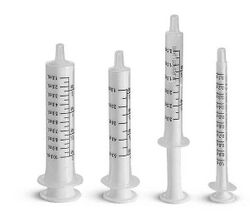Volumetric liquid dosing
|
Template:Proofread |
Volumetric dosing is the process of dissolving a compound in a liquid to make it easier to measure. In the interest of harm reduction, it is important to use volumetric dosing with certain compounds which are too potent to measure with traditional weighing scales. This technique makes it possible to use a cheap $30 scale and still measure accurately to only a few milligrams.[1]
Many psychoactive substances, including benzodiazepines and certain psychedelics, are active at less than a single milligram. Such small quantities cannot be accurately measured with common digital scales, so the drug must instead be dosed volumetrically by weighing out larger amounts the compound and dissolving it in a calculated volume of a suitable liquid.
There is a volumetric dosing calculator located here which will calculate the amount of drug and solvent needed as well as the concentration.
Materials
- Solvent such as alcohol (vodka or everclear work best), water, propylene glycol, or glycerine (depending on substance)
- Note: Search the internet to determine what solvent to use. All drugs should dissolve in alcohol, but many drugs will not dissolve in water.
- Liquid measurement device such as a syringe (can be an oral syringe or one with a needle), graduated cylinder, eyedropper, measuring pipette, or measuring cups
- Milligram scale
- Sealed storage bottle or container
Solvent
Certain psychoactive substances (particularly benzodiazepines) are practically insoluble in water, but will dissolve at various concentrations in other easy to acquire solvents such as alcohol, propylene glycol, or glycerine.
The first important consideration is the maximum concentration at which your chosen solvent will dissolve your product. A value can usually be found with minimal effort on the internet, using a search term like "<material> <solvent> solubility".
Beneficially, alcohol is mixable with most solvents. Just a few drops is usually enough to increase the maximum concentration dramatically, even when using water as the major component.
Measurement
There is a volumetric dosing calculator located here which will calculate the amount of drug and solvent needed as well as the concentration.
Liquid

For best accuracy, an oral syringe should be used to measure the calculated volume of liquid. You may also use other measuring tools such as a syringe with a needle, graduated cylinder, eyedropper, measuring pipette, or measuring cups.
The conversions for measuring cups are listed below:
- 1/4 teaspoon (TSP) = 1.25ml
- 1/2 teaspoon (TSP) = 2.5ml
- 1 teaspoon (TSP) = 5ml
- 1 tablespoon (TSB) = 15ml
If one is using an eyedropper,
For efficient dosing, a 1ml syringe with 0.1ml graduations can be used with solutions at a concentration of 10mg/1ml; this provides 1mg/0.1ml graduation. It may be better to use a lower concentration if your usual dose is below 1mg.
Powder
It is vital to weigh the amount of powder that you want to volumetrically dose with a milligram scalefirst. Even if the weight is on the bag itself, do not assume that the vendor has given you a certain amount of a substance; it is not uncommon for vendors to give more product than is labelled. If one believes they received 500mg, but actually received 1000mg, then the liquid solution will be twice as strong as expected.
To achieve a concentration of 10mg/1ml, measure the weight of material in milligrams, then divide the value by 10. So for 1000mg material, 100ml of solvent will be required. It is safest to use the lowest concentration possible, preferably 1mg/1mL or less for very potent drugs active in the 1mg range.
Dissolution
After weighing the material, calculating the concentration, and measuring the required volume of solvent; using a suitable container add the liquid then carefully mix in the compound. Seal tightly and mix thoroughly by shaking the container vigorously.
To aid in dissolution, the container can be placed in a heat bath to warm it up. After a while the solvent will become less viscous and can be mixed more thoroughly.
Storage
- Avoid exposure to direct sunlight or heat
- Label the container with contents and concentration
- Keep in a safe place away from children
See also
External links
- Liquid measurement guide (Erowid)
- Guide to volumetric dosing (Reddit)
- Volumetric dosing tool (TripSit)
References
- ↑ Liquid Measurement Technique by Zam (Erowid) | https://www.erowid.org/psychoactives/dose/dose_info1.shtml
